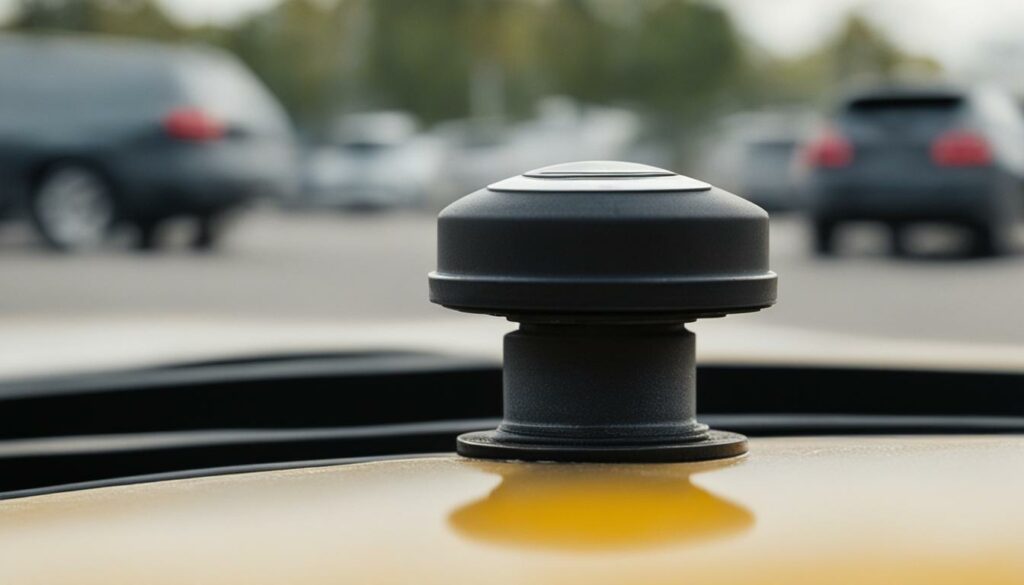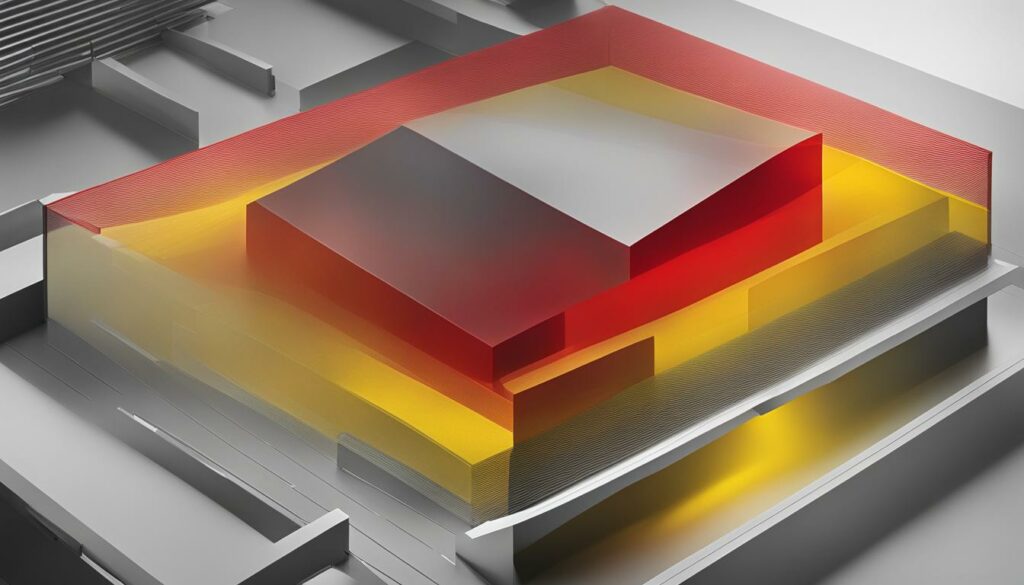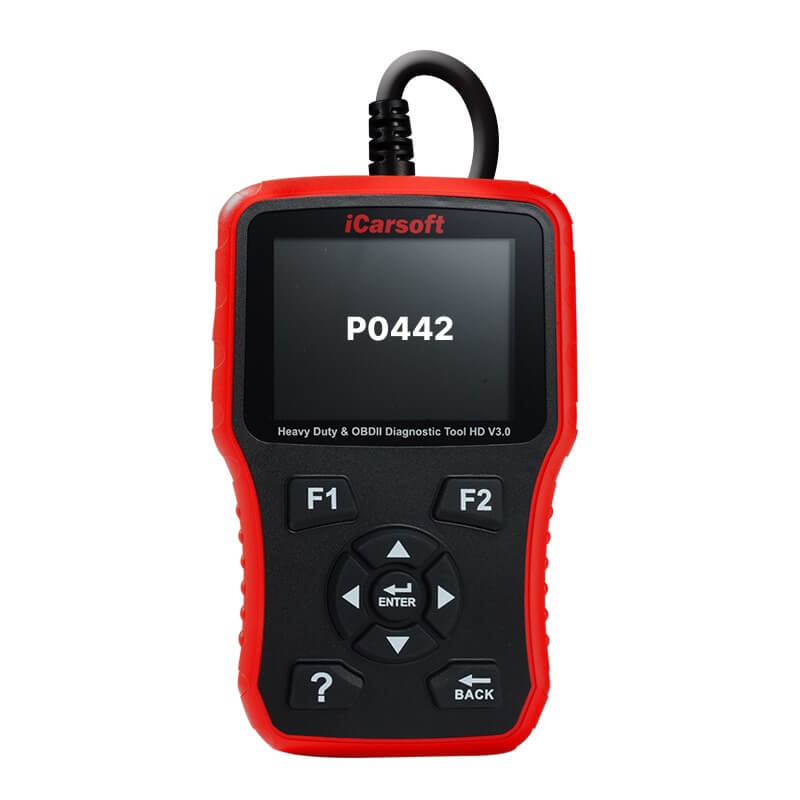P0442 – Evaporative Emission Control System Leak Detected (small leak)
POSTED IN pcodes
The P0442 code is a diagnostic trouble code (DTC) that indicates a small leak in the vehicle’s evaporative emission control system. This code is often accompanied by other EVAP system codes. When the ECU detects a small leak, it triggers the Check Engine Light to alert the driver. Common causes of the P0442 code include a faulty or loose fuel cap, EVAP system line leaks, charcoal canister leaks, fuel tank leaks, and failed vent or purge valves. In some cases, the code may result in a slight drop in gas mileage. A mechanic diagnoses the code by using a scan tool to check for codes and examine freeze frame data. They also perform a visual inspection of the EVAP system, check for tank or canister cracks, test the gas cap, monitor tank pressure, and perform a smoke test to detect vapor leaks. Repairs for the P0442 code may include replacing the gas cap, fuel tank, charcoal canister, EVAP system lines, or purge or vent valves.
Key Takeaways:
- The P0442 code indicates a small leak in the vehicle’s evaporative emission control system.
- Common causes of the P0442 code include a faulty or loose fuel cap, EVAP system line leaks, charcoal canister leaks, fuel tank leaks, and failed vent or purge valves.
- A mechanic can diagnose the code using a scan tool, visual inspection, and various tests such as a smoke test.
- Repairs for the P0442 code may involve replacing components such as the gas cap, fuel tank, charcoal canister, or EVAP system lines.
- Promptly addressing the P0442 code is important to ensure the proper functioning of the emission control system and minimize environmental impact.
What is the P0442 Code?
The P0442 code is a diagnostic trouble code that indicates a malfunction in the evaporative emission control system. Specifically, it signifies a small leak in the system.
When this code is present, the ECU has detected that fuel vapors are leaking from the EVAP system into the atmosphere. This code may be accompanied by other EVAP system codes.
The Check Engine Light will be illuminated on the dashboard to alert the driver to the issue.
Common Causes of the P0442 Code
When your vehicle’s Check Engine Light illuminates and you receive the P0442 code, it indicates a small leak in the evaporative emission control system. This code can be triggered by various issues within the EVAP system. Some of the common causes of the P0442 code include:
Buy tested tuning file for Adblue / EGR / DPF / Adblue off now!
- Faulty or Loose Fuel Cap: A loose or defective fuel cap is one of the most common causes of the P0442 code. It allows fuel vapors to escape from the tank, leading to a small leak.
- EVAP System Line Leaks: Cracked or damaged EVAP system lines can result in small leaks, causing the P0442 code to appear. These leaks can occur anywhere within the system, hindering proper emission control.
- Charcoal Canister Leaks: The charcoal canister is a vital component of the EVAP system. If it becomes damaged or develops leaks, it can lead to a small leak and trigger the P0442 code.
- Fuel Tank Leaks: Malfunctions or cracks in the fuel tank itself can cause small leaks in the EVAP system. These leaks release fuel vapors and activate the Check Engine Light with the P0442 code.
- Failed Vent or Purge Valves: Faulty vent or purge valves can disrupt the vacuum seal in the EVAP system, resulting in a small leak and the appearance of the P0442 code.
When any of these issues occur, the EVAP system fails to contain and control fuel vapors properly, leading to a small leak. This triggers the Check Engine Light and prompts the P0442 code to be displayed.
In order to diagnose and resolve the P0442 code effectively, it is essential to identify and address the underlying cause. Now, let’s move on to section 4 to explore the symptoms associated with the P0442 code.
Symptoms of the P0442 Code
The P0442 code is often accompanied by noticeable symptoms that can help identify the presence of a small leak in the vehicle’s evaporative emission control system. The key symptoms to look out for include the following:
- Check Engine Light: One of the most common symptoms of the P0442 code is the illumination of the Check Engine Light on the vehicle’s dashboard. This warning light is triggered by the vehicle’s ECU when it detects a problem in the emission control system, indicating the presence of a small leak.
- Gas Mileage: In some cases, drivers may notice a slight decrease in gas mileage when the P0442 code is present. The small leak in the evaporative emission control system can result in a loss of fuel vapor, leading to reduced fuel efficiency.
It’s important to note that the severity of these symptoms can vary depending on factors such as the specific vehicle and the size of the leak. Therefore, it’s crucial to address the P0442 code promptly to prevent any further damage to the emission control system and minimize potential effects on gas mileage.
Check out the table below for a summary of the symptoms associated with the P0442 code:
| Symptoms of the P0442 Code |
|---|
| Check Engine Light Illuminated |
| Slight Decrease in Gas Mileage |
By staying alert to these symptoms and taking appropriate action, you can ensure the smooth operation of your vehicle’s evaporative emission control system and maintain optimal gas mileage.
Diagnosis of the P0442 code
A mechanic can diagnose the P0442 code using various diagnostic methods and tools. These include:
- Scan tool: By connecting a scan tool to the vehicle’s onboard diagnostic (OBD) port, the mechanic can retrieve the stored trouble codes, including the P0442 code. This provides valuable information to understand the specific issue with the evaporative emission control system.
- Freeze frame data: The scan tool also allows the mechanic to access freeze frame data, which captures information about the vehicle’s operating conditions at the time the code was set. This data can provide crucial insights into the circumstances surrounding the malfunction, aiding in the diagnosis process.
- Visual inspection: A thorough visual inspection of the EVAP system is crucial in identifying visible cracks, breaks, or loose components. The mechanic will carefully examine the fuel tank, charcoal canister, and EVAP system lines for any signs of damage or deterioration. This inspection can help pinpoint the location of the small leak in the system.
- Gas cap inspection: The gas cap is a common culprit for the P0442 code. The mechanic will inspect the gas cap for proper fitment and condition, ensuring it is tightly sealed. They may also use a gas cap tester to verify its functionality.
- Tank pressure monitoring: The mechanic can utilize the scan tool to monitor the tank pressure in real-time. This allows them to determine if there is a leak in the EVAP system, as a drop in tank pressure indicates a potential issue. By comparing the pressure readings with the manufacturer’s specifications, the mechanic can further narrow down the source of the leak.
- Smoke test: To detect hard-to-find vapor leaks, the mechanic may perform a smoke test. This involves introducing smoke into the EVAP system and observing for any signs of leakage. The smoke will escape through any cracks or openings, making it easier to identify the location of the small leak.
The comprehensive diagnosis process, which includes the use of the scan tool, visual inspection, gas cap inspection, tank pressure monitoring, and potentially a smoke test, helps the mechanic identify the exact cause of the P0442 code. This enables them to recommend the appropriate repairs to rectify the small leak in the evaporative emission control system.
Common Mistakes when Diagnosing the P0442 Code
When diagnosing the P0442 code, one common mistake is overlooking the gas cap as a potential cause. The gas cap is a frequently overlooked culprit for the P0442 code and failing to properly inspect and test it can result in wasted time and effort spent diagnosing other components.
Qualified technicians should follow all diagnostic steps in the proper order to avoid these common mistakes. By giving thorough attention to the gas cap during the diagnostic process, technicians can avoid unnecessary complications and ensure an accurate diagnosis for the P0442 code.

Accurate Diagnosis Matters
The gas cap is an essential part of the vehicle’s fuel system and plays a crucial role in maintaining the pressure within the evaporative emission control system. When the gas cap is loose, damaged, or not properly sealed, it can cause fuel vapors to escape into the atmosphere, leading to a small leak and triggering the P0442 code.
“Neglecting to inspect the gas cap thoroughly can lead to misdiagnosis and unnecessary repairs.”
By recognizing the significance of the gas cap, technicians can avoid overlooking this common cause of the P0442 code. Diligent inspection and testing of the gas cap should be part of the standard diagnostic procedure when addressing the P0442 code.
Severity and Impact of the P0442 Code
The P0442 code, also known as “Evaporative Emission Control System Leak Detected (small leak),” does not have immediate severe consequences. However, it indicates that the vehicle’s EVAP system has a small leak, resulting in fuel vapors escaping into the atmosphere. This can contribute to environmental pollution, as fuel vapors contain harmful emissions. Additionally, the presence of this code may result in a slight decrease in fuel economy.
When the P0442 code is triggered, the vehicle’s Check Engine Light will illuminate, signaling the need for attention. While the immediate impact may not be severe, it’s crucial to address this code promptly to prevent further damage to the emission control system and minimize environmental impact.
Environmental Impact
The P0442 code signifies that the vehicle’s EVAP system is leaking fuel vapors, which can negatively impact the environment. Fuel vapors contain pollutants that contribute to air pollution and can harm air quality. By repairing the small leak in the EVAP system, we can help reduce harmful emissions and promote a cleaner, healthier environment.
Impact on Fuel Economy
The presence of the P0442 code may result in a slight decrease in fuel economy. As fuel vapors leak from the EVAP system, it affects the overall efficiency of the vehicle’s fuel usage. By addressing the code and fixing the small leak, we can help improve fuel economy and save money at the pump.

| Severity | Impact |
|---|---|
| The P0442 code does not pose immediate severe consequences. | Leaking fuel vapors contribute to environmental pollution and may result in a slight decrease in fuel economy. |
| Proper diagnosis and repair are essential to ensure the emission control system’s proper functioning and minimize environmental impact. | Fixing the small leak can improve fuel economy and promote a cleaner environment. |
Conclusion
In conclusion, the P0442 code points to a small leak in the vehicle’s evaporative emission control system. This issue can be caused by various factors, such as a faulty or loose fuel cap, leaks in the EVAP system lines, charcoal canister leaks, fuel tank leaks, or failed vent or purge valves. When this code is detected, it triggers the Check Engine Light and may lead to a slight decrease in fuel mileage.
To diagnose the P0442 code, a mechanic will use a scan tool to check for codes and examine freeze frame data. They will also perform a visual inspection of the EVAP system, including the gas cap, fuel tank, and charcoal canister. Additional tests, such as monitoring tank pressure and conducting a smoke test, may be necessary to detect vapor leaks. Prompt repairs should be made to address the small leak and ensure the proper functioning of the emission control system.
By addressing the P0442 code and fixing the small leak in the EVAP system, you can maintain the integrity of your vehicle’s emission control system and minimize environmental impact. If you notice the Check Engine Light illuminated or experience a decrease in fuel mileage, it’s essential to have the code diagnosed and repaired by a qualified technician.
FAQ
What is the P0442 code?
The P0442 code is a diagnostic trouble code (DTC) that indicates a small leak in the vehicle’s evaporative emission control system. It is often accompanied by other EVAP system codes and triggers the Check Engine Light to alert the driver.
What are the common causes of the P0442 code?
Common causes of the P0442 code include a faulty or loose fuel cap, EVAP system line leaks, charcoal canister leaks, fuel tank leaks, and failed vent or purge valves.
What are the symptoms of the P0442 code?
The primary symptom of the P0442 code is the Check Engine Light being illuminated on the vehicle’s dashboard. In some cases, there may also be a slight drop in gas mileage.
How is the P0442 code diagnosed?
A mechanic diagnoses the P0442 code by using a scan tool to check for codes and examine freeze frame data. They also perform a visual inspection of the EVAP system, check for tank or canister cracks, test the gas cap, monitor tank pressure, and perform a smoke test to detect vapor leaks.
What are common mistakes when diagnosing the P0442 code?
One common mistake when diagnosing the P0442 code is overlooking the gas cap as the potential cause. Proper inspection and testing of the gas cap are essential to avoid wasting time and effort diagnosing other components.
What is the severity and impact of the P0442 code?
The P0442 code itself does not pose any immediate severe consequences. However, it indicates that the vehicle’s EVAP system is leaking fuel vapors into the atmosphere, contributing to environmental pollution. Additionally, a slight dip in fuel economy may be noticed.
Can the P0442 code be ignored?
It is not recommended to ignore the P0442 code. While it may not have immediate severe consequences, addressing the code promptly is important to ensure the proper functioning of the emission control system and minimize environmental impact.


